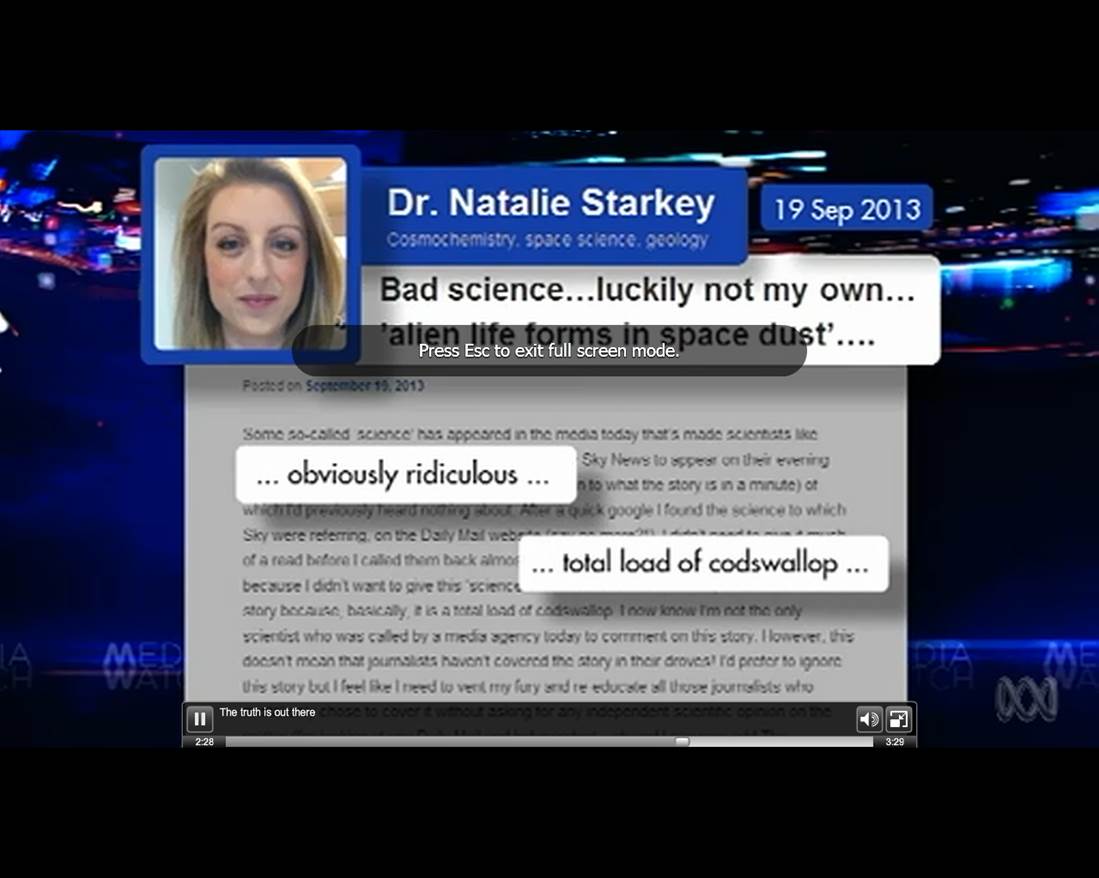My recent article about comet ISON from The Conversation website.
Comet ISON fizzles … but there’s a sting in the tail
By Natalie Starkey, The Open University
If there is one thing we know about comets, it is that their behaviour is really hard to predict and that they will always surprise us – and sometimes disappoint.
Unfortunately it looks like comet ISON, or most of it, did not survive its terrifying encounter with the sun yesterday when it made a close approach at just 1.2 million kms from our closest star’s fiery surface. This distance may seem large but it is close enough to have subjected the comet to temperatures of around 2,700°C. To survive such a close shave with the sun may sound unlikely. But a few other sungrazing comets have been known to survive closer passes so there was immense hope it would perform a death-defying stunt and emerge intact.
ISON did not leave us without a final serving of mystery though. Soon after reaching its nearest point to the sun (known as perihelion), Twitter and news agencies were alight, lamenting its loss following no signs of it emerging. It was assumed to have disintegrated – RIP ISON.
But then, moments later, new images emerged showing a hint of something appearing on the other side of the sun. Was this still a diminished comet ISON or a ghostly version of its former self? Well, comet experts are not sure.
Whatever appeared after perihelion had enough matter in it to produce a tail, which started fading as it got farther from the sun. But to be able to say anymore, scientists need more data, which they don’t have.
This is because ISON is still too close to the sun and remains too faint for equipment to record what data will be needed. What can be said for certain is that whatever the size of the nucleus of the remnant, if it has one, it will be much smaller than a few weeks ago when it was visible to the naked eye from Earth.
Comet of the century
Comet ISON had been dubbed the Comet of the Century. Ever since it was first spotted in September 2012 scientists believed it had the potential to shine brighter than the Moon. Although ISON did not quite live up to these predictions, it has certainly put on a good show on its perilous journey from the Oort cloud, a region of icy comets lying nearly a light year from the sun, where it lived for 4.6 billion years.
In recent weeks ISON has been entertaining us with a show of varying levels of dust and ice streaming from its nucleus. As it got closer to the sun, the dust production of ISON has, at times, seemed to completely shut down. This led some worried scientists to suspect the comet had died very early, its shining light distinguished. But then ISON surprised us all by turning on again and the last sightings before perihelion suggested that it had not yet run out of juice.
Bright comets from the Oort cloud passing the Earth are extremely rare. Astronomers study these icy objects to learn more about the mysterious visitors from the outer solar system. ISON holds secrets 4.6 billion years old, including potential information about the earliest formed gases and dust in our solar system. But despite what has become of comet ISON, scientists have acquired lots of new data about the comet on its journey to the sun, which will help them understand, and hopefully better predict, the behaviour of future cometary visitors.
The rarity of this event explains why scientists have been unsure how to predict what the comet was going to do as they do not have much to compare it to. Passing the sun is certainly no easy manoeuvre: the extremes of gravity and heat acting to rip apart and explode the comet nucleus, possibly vaporising it in a split second.
We have probably been denied the opportunity to observe a beautiful comet blazing through our night skies in December. But it is not not all bad news. ISON’s curtailed life allowed us to learn more about the behaviour of these ancient icy dustballs. And, while scientists pore over new comet data, we can all anticipate the next one to be spotted hurtling toward the sun. It could be a good few years, but there’s one thing we can be assured – comets will always take us on a thrilling ride.
This article was updated on December 1 to include the latest information about ISON.
Natalie Starkey receives funding from The Science and Technology Facilities Council. She is affiliated with Planetary and Space Sciences at The Open University.
![]()
This article was originally published at The Conversation.
Read the original article.


